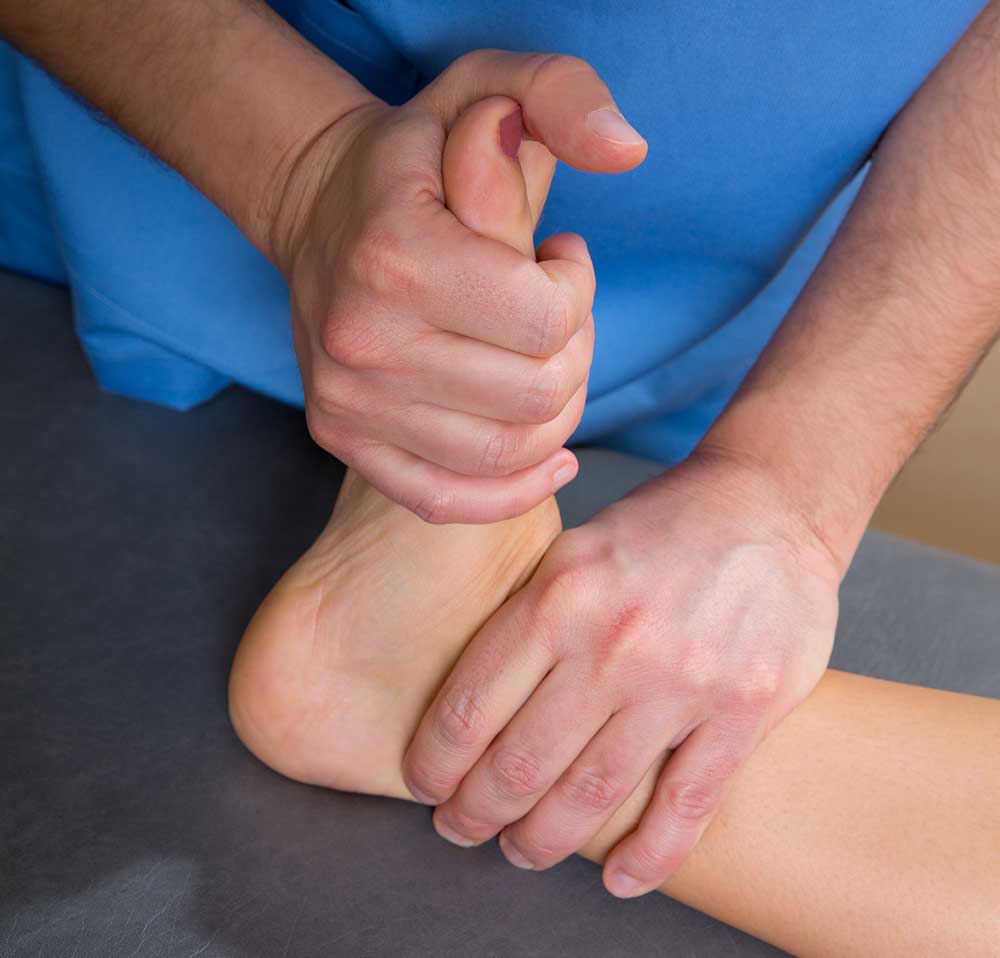Foot Drop Diagnosis and Treatment
What is Drop Foot?
Our peripheral nervous system has a sensory and a motor component. The sensory nerves help us feel things. When these nerves get injured, patients often describe symptoms of numbness, tingling, pins and needles. When a motor nerve gets affected, we see a deficit in function. Drop foot is a term that is often used when a person has difficulty lifting the ankle toward the shin (dorsiflexion), usually caused by damage to the motor nerve. As a practitioner, the challenge is determining where the irritation or entrapment of the nerve is occurring. If you think of it logically, nerves leave the spinal cord and course through and between structures to get to the muscle they innervate. The L5 spinal level is where the motor nerves responsible for dorsiflexion leave the spine. These nerves can be entrapped immediately as they leave the spine (as in the case of stenosis or a disc herniation), or they can be entrapped peripherally as they weave between tight spaces. In the case of drop foot, which leads to slapping gait, the problem can occur in various areas. Most commonly a patient with drop foot will have the nerve entrapped at either the spine or peripherally in an area lower down just past the knee. So how do we know where the problem is? There are clinical tests we can perform which should help give us an idea where the problem lies. Thankfully, these foot drop tests have some research to support their use.
Diagnosing Drop Foot
Quite a long time ago, Conrad and Benecke found that 81% of patients with lumbar disc herniation and L5 nerve irritation had reduced innervation to the gluteus medius muscle. The gluteus medius muscle is primarily responsible for hip abduction (lifting the leg away from the body when side-lying). Keep in mind that this L5 nerve root also gives innervation to the muscles involved in dorsiflexion. So if you think of it like a garden hose, we can use clinical tests to determine where along the garden hose the compression is occurring. Is it happening at the nerve root where it leaves the spine, or is it occurring lower down, just below the knee where the fibular nerve is susceptible? If the patient shows obvious strength and capability in the gluteus medius, then the nerve root (near the spine) is probably not the cause. In other words, if the patient has foot drop and slapping gait with a strong gluteus medius, then the entrapment is more likely to be further down. If the patient has the foot drop but also has gluteus medius weakness, then it’s perhaps more reasonable to expect that the problem is closer to the spine. As mentioned above, this would suggest causes like spinal stenosis or lumbar disc herniation.
Treating Foot Drop
If you’re not a practitioner, it’s entirely reasonable to be a little confused right now. The important take-home message of this blog is that if you have drop foot, there is a lot you can do from a treatment standpoint. Obviously, a foot drop treatment strategy has a better chance of helping if we have a better idea of where the problem is. Nerve conduction tests can be helpful to figure out where nerve entrapment is occurring, but there is often quite a waiting list to get this done.
Thankfully, this study highlights the usefulness of understanding the neuroanatomy, testing the gluteals and deciphering between two of the most common entrapment sites for L5.
Still confused? If you have stenosis, lumbar disc herniation, peripheral nerve entrapment, foot drop or slapping gait, we can help!
Reference
Conrad B & Benecke R. Electromyographic examination of gluteal muscles in the differential diagnosis of lumbar herniated discs. Arch Psychiatr Nervenkr 1979; 227: 333-339.
Jeon C, Chung N, Lee Y et al. Assessment of hip abductor power in patients with foot drop. A simple and useful test to differentiate lumbar radiculopathy and peroneal neuropathy. Spine 2013; 38(3): 257–263.








